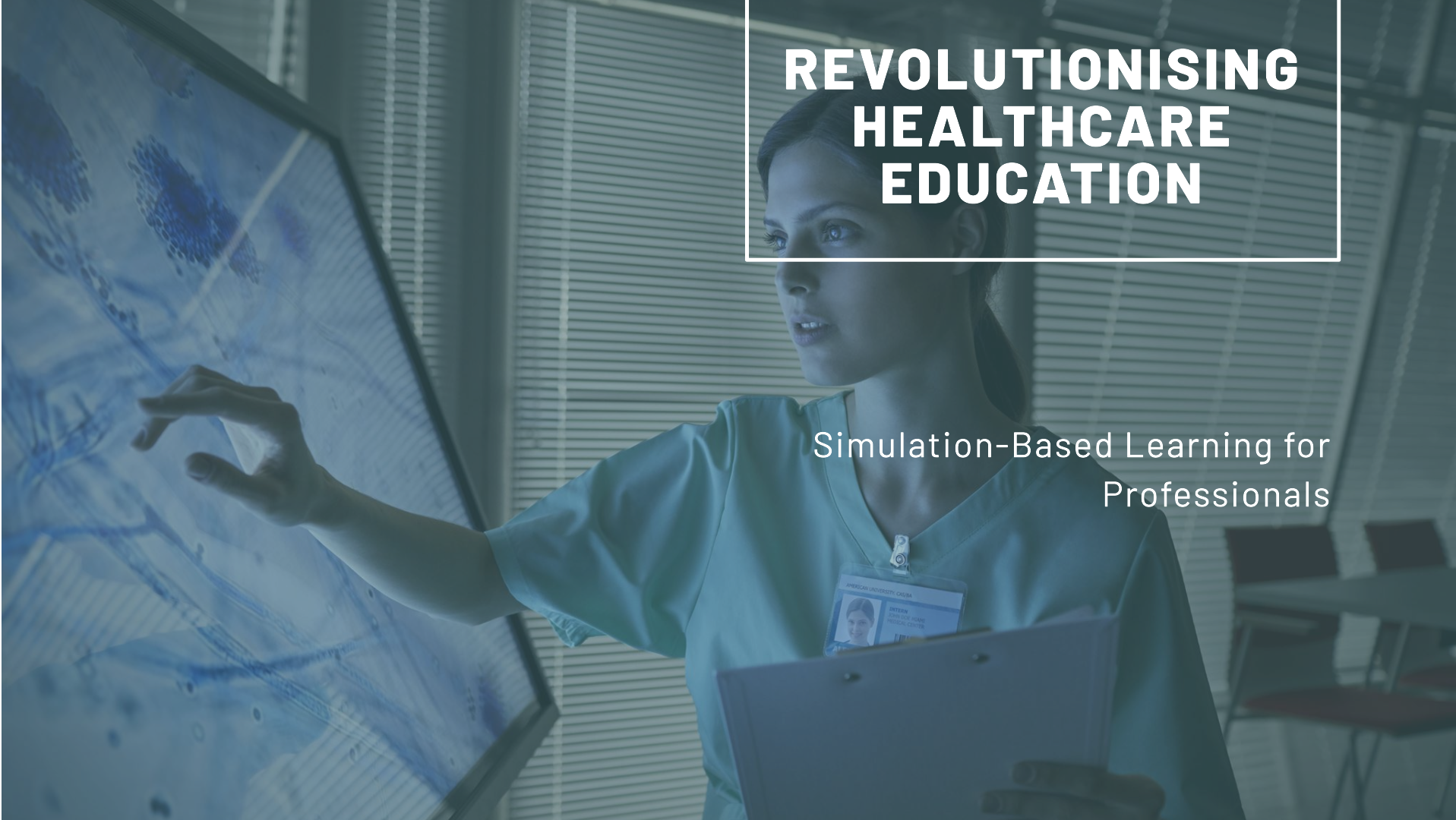
Simulation-based learning has become a cornerstone of healthcare education, offering professionals a safe environment to practice skills, refine decision-making, and improve patient outcomes. As technology advances, the future of simulation-based learning promises even greater innovation, transforming how healthcare professionals are trained and continuously upskilled.
This article explores emerging trends such as AI-driven simulations, immersive reality, and data-driven personalised training, highlighting how they will shape the future of healthcare education.
1. AI-Driven Simulation: Smarter, Adaptive Learning
Artificial Intelligence (AI) is revolutionising healthcare education by introducing simulations that are dynamic, responsive, and adaptive to individual learners’ needs.
Key Features:
-
Real-Time Adaptation: AI-powered simulations can adjust scenarios in real time based on learners’ actions, providing increasingly challenging or supportive environments.
-
Intelligent Virtual Patients: AI enables virtual patients to exhibit realistic behaviours, such as physiological responses to treatments or complex emotional reactions, creating a deeper learning experience.
-
Automated Feedback: AI can provide immediate, personalised feedback, identifying areas of strength and improvement for each learner.
Impact on Training:
AI-driven simulations enhance decision-making by mimicking the unpredictability of real-life scenarios. They also enable learners to receive tailored experiences, ensuring training meets their specific competency levels.
2. Immersive Reality: VR, AR, and XR in Healthcare Education
Immersive reality technologies, including Virtual Reality (VR), Augmented Reality (AR), and Extended Reality (XR), are creating highly engaging and interactive learning experiences.
Key Features:
-
Virtual Reality (VR): Offers fully immersive environments where learners can practice procedures in operating rooms, emergency scenes, or other high-stakes settings.
-
Augmented Reality (AR): Overlays digital information onto the real world, enhancing clinical training with step-by-step guides or interactive anatomy visuals.
-
Extended Reality (XR): Combines AR and VR to create hybrid learning environments that bridge physical and virtual spaces.
Impact on Training:
Immersive technologies provide realistic, hands-on experiences without risk to patients. For example, paramedics can train in VR scenarios replicating roadside emergencies, while surgeons can practice complex procedures with haptic feedback for lifelike sensations.
3. Data-Driven Personalised Training
Big data is transforming simulation-based learning by enabling personalised, evidence-based education.
Key Features:
-
Learner Analytics: Tracking performance metrics, such as decision-making speed, accuracy, and procedural skills, to identify learning gaps.
-
Personalised Pathways: Data insights help design individualised training plans, focusing on areas where learners need improvement.
-
Predictive Analytics: Using past performance data to predict future learning outcomes and customise scenarios accordingly.
Impact on Training:
Personalised training ensures healthcare professionals focus on their unique learning needs, maximising efficiency and effectiveness. This approach is especially valuable in professional development, helping clinicians maintain competencies over time.
4. Gamification: Making Learning Engaging and Rewarding
Gamification is gaining traction in healthcare education, incorporating game-like elements to make simulation-based learning more engaging.
Key Features:
-
Scenario Progression: Learners advance through increasingly complex challenges, earning points or rewards for achieving milestones.
-
Leaderboards: Encourages healthy competition among peers, fostering motivation and engagement.
-
Interactive Storylines: Scenarios include branching narratives where learners’ decisions shape outcomes, mirroring real-life complexities.
Impact on Training:
Gamification enhances motivation and retention by making learning enjoyable. It’s particularly effective for younger professionals accustomed to digital and interactive learning environments.
5. Interprofessional and Remote Simulation
Collaboration is critical in healthcare, and interprofessional simulation is evolving to reflect the reality of multidisciplinary teams.
Key Features:
-
Interprofessional Scenarios: Simulations involve doctors, nurses, paramedics, and other professionals working together to manage patient care.
-
Remote Simulation: Cloud-based platforms enable learners from different locations to participate in the same simulation, fostering teamwork across geographic boundaries.
-
Global Collaboration: Remote access allows educators and learners from around the world to share expertise and resources.
Impact on Training:
Interprofessional and remote simulations prepare learners for the collaborative nature of modern healthcare, improving communication, coordination, and patient outcomes.
6. Integration of Real-World Data into Simulations
Simulations are becoming increasingly realistic by incorporating real-world data from healthcare systems.
Key Features:
-
Patient Data Integration: Using anonymised patient data to create realistic scenarios based on actual cases.
-
Epidemiological Trends: Simulations reflect current trends, such as managing patients during a pandemic or preparing for rare diseases.
-
Clinical Equipment and Devices: Simulations replicate the latest tools and technology used in healthcare settings.
Impact on Training:
This approach ensures that simulations are not only realistic but also highly relevant, preparing learners for the challenges they are most likely to encounter in their careers.
7. Continuous Professional Development Through Simulation
Simulation-based learning is no longer limited to students; it’s increasingly used for ongoing professional development.
Key Features:
-
Competency Refreshers: Professionals can revisit critical skills or learn new ones through simulation.
-
Advanced Scenarios: Experienced clinicians can train for rare or high-stakes situations, such as disaster management or complex surgeries.
-
Flexible Access: Online and modular simulations allow professionals to train at their convenience.
Impact on Training:
Simulation supports lifelong learning, ensuring healthcare professionals stay current with evolving practices and technologies.
Looking Ahead: The Future of Simulation-Based Learning
The future of simulation-based learning lies at the intersection of technology, data, and human-centred design. Innovations such as AI-driven simulations, immersive technologies, and personalised training are set to make healthcare education more efficient, effective, and engaging. These advancements will not only benefit students but also play a critical role in ensuring healthcare professionals are well-equipped to provide high-quality patient care.
Actionable Insight:
Educators and healthcare leaders should start exploring these emerging trends to integrate cutting-edge simulation tools into their training programs. By staying ahead of the curve, we can prepare the next generation of healthcare professionals to meet the challenges of a rapidly evolving field.
Leave a Reply